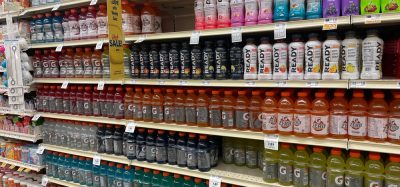Why improve and harmonise food safety regulations?
- Like
- Digg
- Del
- Tumblr
- VKontakte
- Buffer
- Love This
- Odnoklassniki
- Meneame
- Blogger
- Amazon
- Yahoo Mail
- Gmail
- AOL
- Newsvine
- HackerNews
- Evernote
- MySpace
- Mail.ru
- Viadeo
- Line
- Comments
- Yummly
- SMS
- Viber
- Telegram
- Subscribe
- Skype
- Facebook Messenger
- Kakao
- LiveJournal
- Yammer
- Edgar
- Fintel
- Mix
- Instapaper
- Copy Link
Posted: 13 June 2017 | Huub Lelieveld | No comments yet
Food regulations are needed to protect consumers. Existing regulations, however, may affect food security without any contribution to product safety and hence do not protect consumers. Moreover, laws and regulations differ between countries. In this article Huub Lelieveld, GHI-Association; c/o Department of Food Science and Technology, Universität für Bodenkultur discusses ways to improve this situation.


In 2015 the WHO reported that every year almost one in 10 people in the world become ill from eating food and more than 400,000 die, demonstrating that food safety regulations are badly needed. Regulations, however, often differ between countries and lack a scientific basis. The differences cause food safety and food security problems, especially in low-income countries. The differences cause difficulties at the borders between countries, particularly for small trading companies that often only discover such differences when their food products reach the border. Much food and many food products are perishable and delays at the border for inspection and negotiation with authorities are costly. Authorities may seize and destroy food and food products that are perfectly healthy, due solely to the fact that the law requires it and challenging the correctness of the law at the border is impossible.
Toxicity and carcinogenicity
Differences in regulations may be used to hide protectionism, as seems to be the case with the maximum residual level (MRL) of carbendazim in orange juice in the USA. Carbendazim is one of the few pesticides that are allowed to protect oranges from spoilage by moulds. Because carbendazim is safe in the concentrations needed, it is allowed in most countries. The MRL allowed in the European Union is between 100 and 700 parts per billion (ppb; parts per 109) and in Canada between 500 and 6,000ppb. Since 30th March 2013 the MRL in the USA is 10ppb and the USA denies entry of products that have a higher concentration.
In 2005 the UK government ordered the destruction of £100,000,000 worth of food products because they contained trace amounts of Sudan Red 1, originating from chilli powder used as an ingredient. At the time, Dr Julie Sharp (representing Cancer Research UK) declared “The risk of cancer in humans from Sudan Red 1 has not been proven and any risk from these foods is likely to be very small indeed”.
Chemicals that are not allowed but nevertheless present in food are not necessarily additives. Most man-made chemicals also occur in nature in concentrations that, due to much better techniques, can now be detected when previously they were not. These are produced by animals, microbes, plants and geochemical processes and include more than 5,000 chlorinated natural organic halogens. Soil is produced by microbes that produce antibiotics. Produce growing in the soil therefore contains antibiotics, as does meat because cattle feed also grows in soil. EU member states and the USA seize and destroy food containing trace amounts of antibiotics no matter how minute the amount; no matter that these concentrations are considered safe in other countries; and no matter that these same antibiotics have frequently been administered in quantities a million times higher in order to treat infections in babies in developed countries.
This is the consequence of laws that require absence. The meaning of ‘absence’ – and thus the meaning of the law – have become dependent on sensitivity of analytical techniques and often have little to do with the safety of the product. Developing countries often export their best quality products to developed countries, leaving only lower quality product for the local population. Usually the rejected exported food is not allowed to be returned to the country of origin and must be destroyed. It is distressing that the best food from a developing country is destroyed for scientifically unjustifiable reasons, leaving a population suffering from poorer qualities of food.


In 2005 £100,000,000 worth of food products were destroyed because of trace amounts of Sudan Red 1 (originating from chilli powder)
A large percentage of the general public is convinced that chemicals are carcinogenic. The reason is that anytime a chemical is mentioned in the press as being carcinogenic, only the chemical name is mentioned and not the amount needed to cause cancer. While for some chemicals, such as aflatoxins, very small amounts may cause cancer, other chemicals must be present in a high concentration. It also depends on whether the chemical is administered as a pure chemical or in a food matrix. Our body consists for more than 0.3% of sodium chloride (NaCl). Nevertheless, even NaCl is carcinogenic. Globally many people drink coffee every day. Coffee contains many carcinogens; nevertheless, evidence shows that the consumption of moderate amounts of coffee does not increase the risk of developing cancer.
The general public should be made aware that studies of carcinogenicity are carried out by feeding animals high doses in a short time, and also that even if animals develop cancer from a particular chemical it does not necessarily follow that humans would do so too. Regrettably, reliable in-vitro test methods that are 100% relevant to humans are not widely used, despite these methods being both faster and cheaper. There is an urgent need to harmonise such methods.
Microbiological food safety
Although the public tend to be more interested in chemical food safety, most food safety incidents are caused by microbes. Contrary to chemicals, microbes multiply – which is usually the reason why safety incidents occur. Healthy people rarely get ill from eating food that has a low number of microbes, but if the number increases the situation changes. There are two main reasons for illness: firstly, the microorganisms themselves may cause illness by destroying the cells that constitute human organs, while others produce toxic substances. For a few types of microbes just a small number can cause illness, while for others several millions are needed. It depends on the individual’s health and also the type of food. Some food effectively neutralises the acidity in the stomach and thereby makes an important barrier ineffective.
A decent food producer applies processes that ensure that their food does not exceed these numbers at the time of consumption, following appropriate legal requirements. However, due to the fact that such requirements differ between countries, incidents with severe consequences can happen. In 1985 a Mexican company produced a soft cheese from unpasteurised milk that contained Listeria monocytogenes – the consumption of which resulted in 62 deaths. In 1993 there was an outbreak of toxigenic Escherichia coli in restaurants in the USA caused by undercooked meat contaminated with faecal matter, resulting in four deaths and 700 people getting ill. In 2011 a similar outbreak in Germany caused 3,950 people to become ill and 53 to die. In 2008-2009 in the USA there was an outbreak of foodborne illness caused by Salmonella thyphimurium, resulting in 700 people getting ill and seven deaths. Despite being aware of the contamination, the company went on to sell contaminated ingredients.
Mycotoxins
Under circumstances that prevail in many countries, nature supports the growth of moulds that produce mycotoxins, which are toxic in very low concentrations. In some countries this problem causes half of the harvest of staple food to become unfit for consumption. Owing to the scarcity of food, in many cases people still consume such food with devastating consequences – no time for developing tumours, but enough for acute poisoning leading to a very painful death. Although much is known about how to control the growth of the harmful moulds, methods to reduce the mycotoxin problem are seldom applied, due to the lack of adequate legislation.
Genetically modified organisms
Crops can be enhanced and losses limited by using genetically modified crops. The use of GMO crops is an important method to alleviate hunger in the southern hemisphere. In the developed world, however, it is easy to find support for abandoning genetically modified food, despite being for unfounded reasons. The fact that populations starve and many die because of anti-GMO activities, seems not to matter to anti-GMO activists. The EU spent more than €300 million investigating the safety of GMOs. The main conclusion to be drawn from the efforts of more than 130 research projects, spanning a period of more than 25 years of research, and involving more than 500 independent research groups, is that biotechnology – and in particular GMOs – are no more risky than, for example, conventional plant breeding technologies (European Commission, 2010). Another reality is that hundreds of millions of people consume GM food daily and there is not a single report of a health incident related to such food.
Food fraud
Food fraud is the illegal tampering with food for economic gain, often by adding chemicals to make the colour of products more attractive. Examples include the addition of lead oxide to paprika powder, lead chromate to curcuma, and Sudan Red to chilli powder. In China, in 2008, greedy companies had diluted milk and masked this by adding melamine, making the protein content look the same as in unadulterated milk. Infant formula made with the melamine-adulterated milk affected more than 300,000 infants of which more than 50,000 were hospitalised, with six deaths confirmed. These are just a few examples of the many cases of adulteration of food and food products.
Innovation
National regulations require evidence of safety for every new product, ingredient or process. The objective, to ensure that food put on the market is safe, self-evidently is laudable. However, there are many differences in requirements between countries, firstly in what substances are allowed and in what concentrations, and secondly in the methods to be employed in order to provide the evidence of safety. For international trade this means that for every country to which a company wants to export, and for every country from which a company wants to import, large costs are involved in finding out what the differences are and in carrying out the additional work to be able to provide the data required. Not only is this costly, but it also takes considerable time and hence will cause delays in the marketing of new products. To justify investments in the research and development of new products and processes, the target market must be large enough. With so much uncertainty about national approvals, justification becomes hard and makes companies refrain from investments in innovations. Globally harmonised requirements and test methods would make innovations more attractive.
Training and education
Those who decide on regulations should understand at least the basics of food safety and, because politicians are strongly influenced by the electorate, it is also important that the general public understands the basics. In order to reduce the number of demands for absurd regulations, a significant part of the population needs to understand that a chemical is only harmful if there is too much of it. Similarly, it must be understood that in order to become ill from microbes a certain number is needed and also that many microbes are essential for peoples’ health. The WG Education of GHI is therefore working on the production of material for education and training at all levels, suitable for translation in local languages. Because almost 800 million people in the world cannot read – and in developing countries illiteracy is often >60% – a pictorial language will also be used.
Conclusions
This article demonstrates why it is important to harmonise food safety regulations and why they should be based on scientific evidence. Harmonisation will remove barriers to trade and avoid the wasteful destruction of healthy food. To make it work, education, training and communication related to food safety must be improved; in particular, information about food safety must be written such that – while still correct – it is easy to be understood by politicians and the general public, to arm them against misinformation.
Reference
Lelieveld H. Why harmonise food regulations and what is needed to make it work? AgroLife Scientific Journal. Volume 6 (1) 2017.
Biography
Huub Lelieveld is President of the Global Harmonization Initiative, Member of the Executive Committee and a Past-President of EFFoST (the European Federation of Food Science and Technology), Founder and Past-President of EHEDG (the European Hygienic Engineering and Design Group). He is a fellow of IAFoST (the International Academy of Food Science and Technology), a fellow of IFT (the Institute of Food Technologists), has served on the Governing Council of IUFoST (the International Union of Food Science and Technology) and has been Chair of the Nonthermal Processing Division and the International Division of IFT. At Unilever, he was responsible for hygienic processing and plant design and novel processing technologies.









